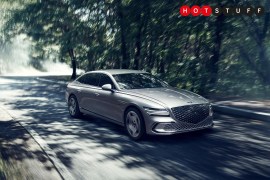The Mazda CX-80 is one of the most comfortable cars I’ve ever reviewed
Anyone needing space and craving high levels of comfort will find the Mazda CX-80 a dream, and there’s a plug-in edition too

Stuff Verdict
If space is a top priority the Mazda CX-80 is one to watch. Comfort levels are glorious, but there are rivals who pip it to the post in the six- and seven-seater stakes
Pros
- Oodles of room front and back
- Posh equipment levels and very practical too
- Relative rarity will probably work in its favour
Cons
- PHEV isn’t as refined as the diesel
- Battery-only range is good but not great
- A hefty thing to manage in small spaces
Introduction
After a week spent behind the wheel of the teensy-weensy Leapmotor T03 city car, I’ve just followed it with seven days in this. The Mazda CX-80 sits at the complete opposite end of the space spectrum, with room for up to seven people to enjoy high levels of comfort. It comes as a plug-in too, so could prove a better option for anyone with a growing family and multiple school run stops than the diesel edition.
Mazda’s flagship SUV is certainly a beefy proposition. The downside is its bulk, which needs to be carefully managed in less spacious surroundings like multi-storey car parks and tight country lanes. The good news is that driving one is much easier than expected, helped along with sumptuous levels of comfort no matter which row you’re in.
The 2.5-litre, 323bhp, all-wheel-drive CX-80 I’ve been testing is a top-of-the-range treat in Homura Plus trim, featuring Mazda’s Captain Console 6-seat layout. Need more space? Mazda also offers this sizable SUV with a seven-seat layout, which puts it in the same niche bracket as the Hyundai Santa Fe or Mercedes GLB. Those with less to spend will get the same kind of space with either the very good Peugeot 5008 or excellent Skoda Kodiaq though.
How we test cars
Every electric car reviewed on Stuff is tested on a range of road surfaces and, where possible, in varying weather conditions. We use our years of experience to compare with rivals and assess ergonomics, technology features and general usability. Manufacturers have no visibility on reviews before they appear online, and we never accept payment to feature products.
Find out more about how we test and rate products.
The styling
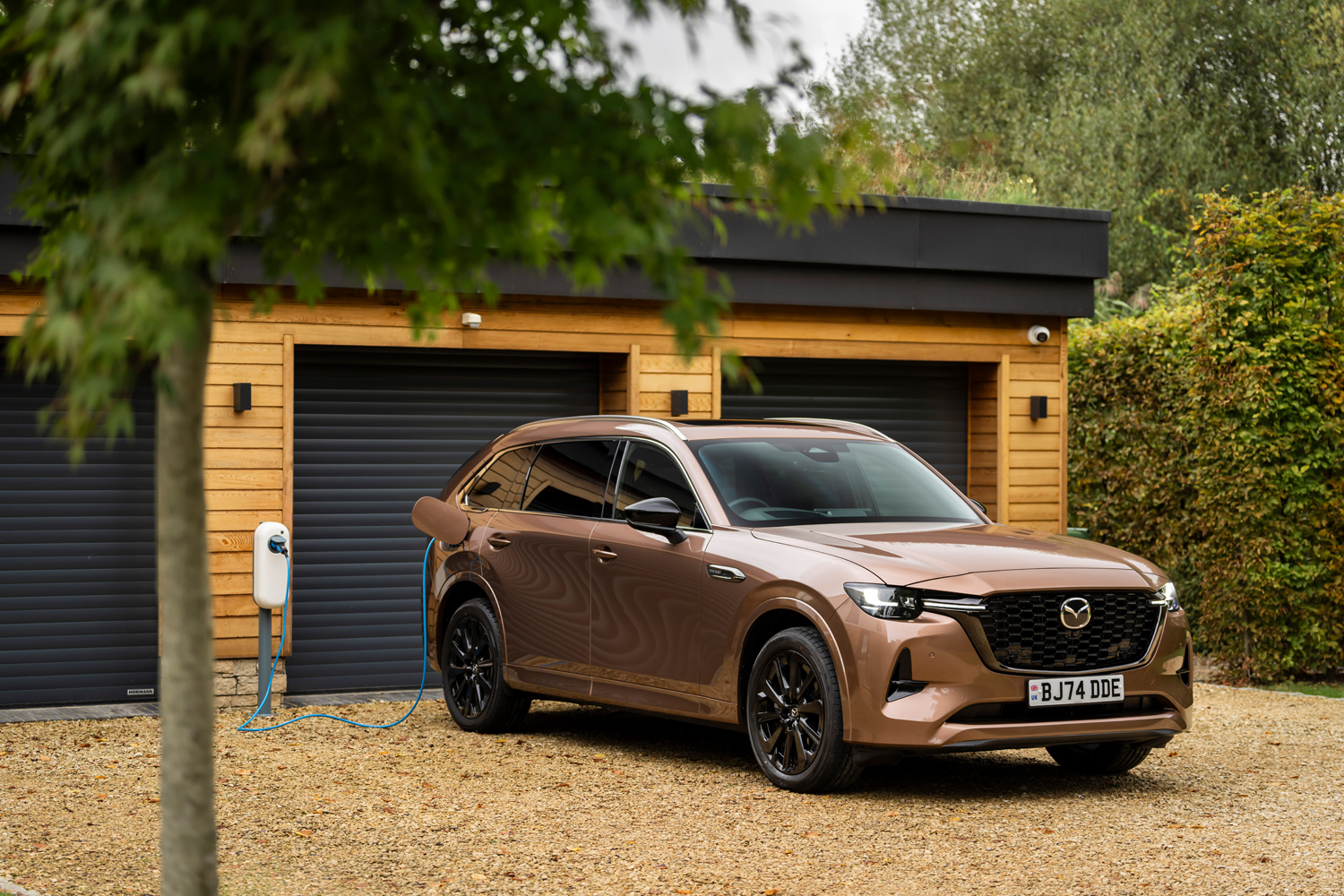

The Mazda CX-80 is a smidge under 5 metres long, over 1.7 metres high and has a width of nearly two metres. That sounds colossal when you see it written down, although it doesn’t feel that bulky to drive. The styling is typically Mazda, with an agreeable front end that looks the part even if it’s not especially interesting.
The slab-sides and back-end are similarly dependable, with the odd fleck of chrome trim lifting the look slightly. Out back, the neat twists and turns that make up the tailgate section make this angle the most interesting of the CX-80, I think. Thankfully, high profile tyres helped remove a little of the bulky appearance of my test car and made it less worrying to park near rim-crunching kerbs.
The Homura Plus trim level of my test car meant it came fully loaded with lots to make longer journeys effortless and super-comfortable. Lashings of Napa leather, a panoramic sunroof and some cool ambient lighting added to the overall premium feel, as did the gloss black 20in rims on the exterior, which contrasted well with the Rhodium White paintwork.
There really is stacks of room inside this SUV too, with its height and panoramic roof offering a cavernous experience even if you’re sat in the second row. Seven seat versions are slightly less generous, but the Mazda CX-80 is certainly not miserly with the space quotas in either model variant.
The drive
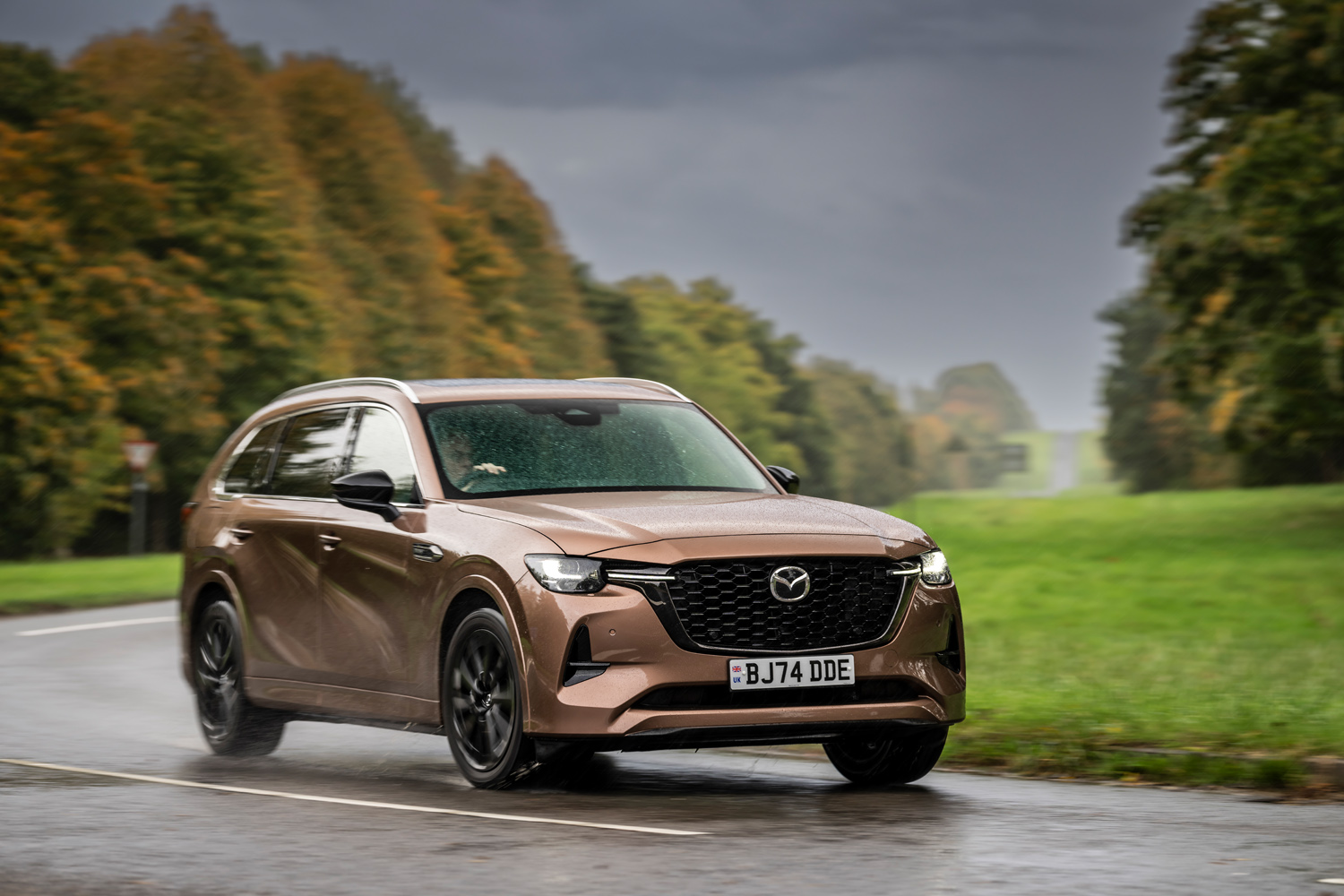
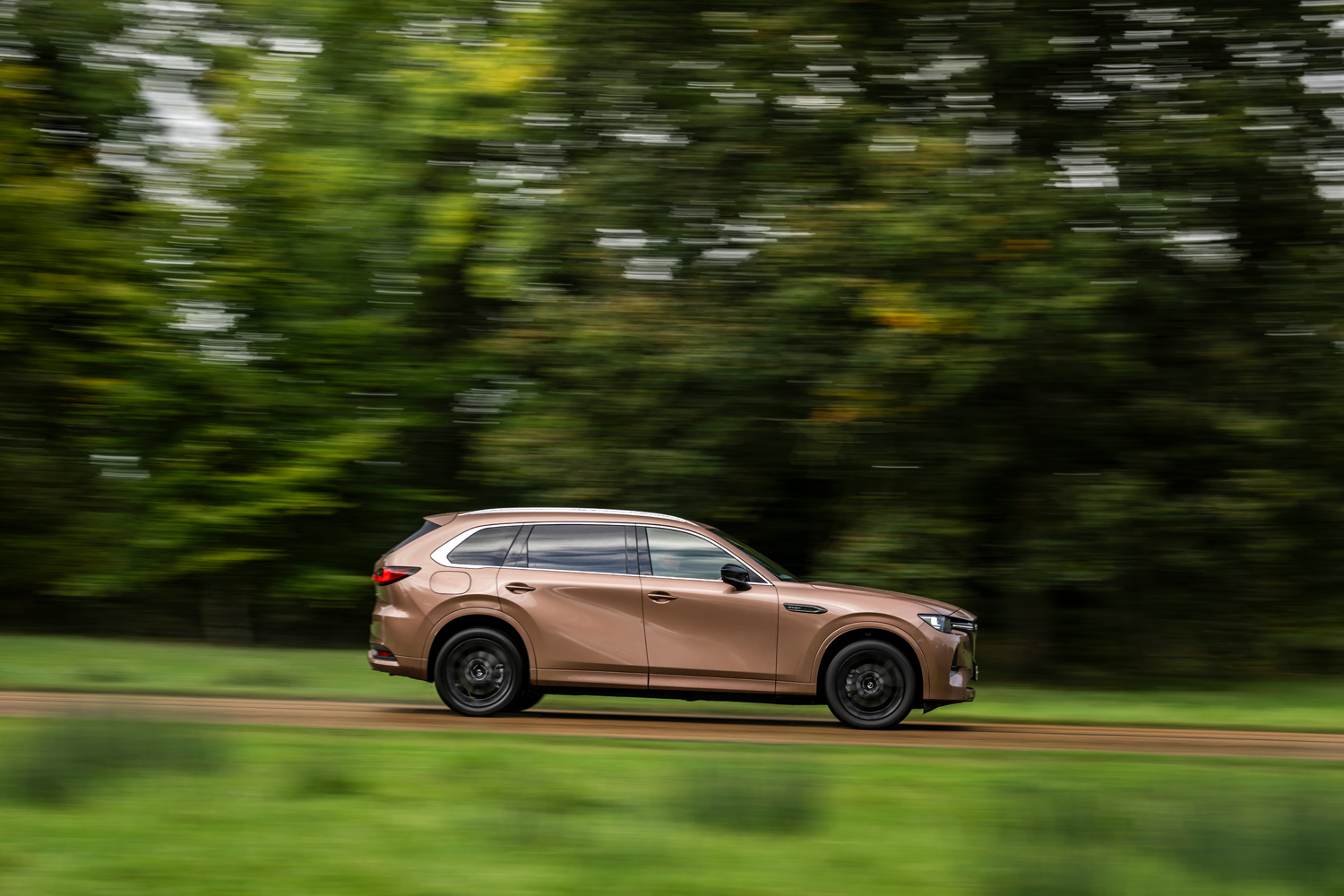
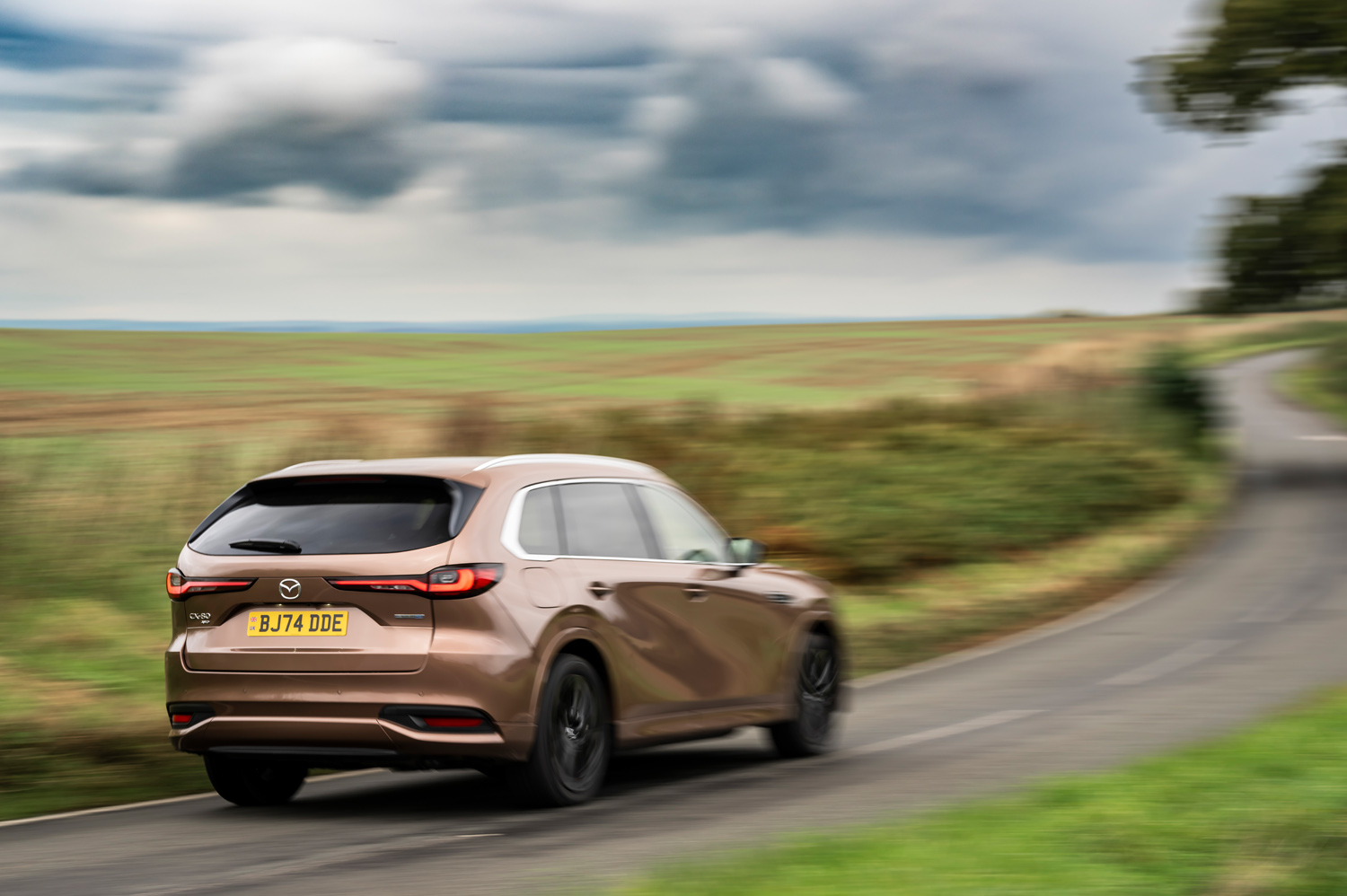
I wish I felt a little more enthusiastic about choosing the PHEV version of the Mazda CX-80 over the diesel. However, it isn’t a huge amount of fun to pilot. Sure, once it gets going, the SUV trundles along very nicely – but attempting any kind of acceleration over and above the norm is met with lots of frantic revving and a slow uptake in speed. On the other hand, driving the CX-80 using its small battery power is very enjoyable, although range is limited to about 30 miles or so in real world scenarios.
There’s no disputing the commanding position delivered from behind the wheel though. Views towards the front are impressive, helped with big door mirrors but things are less great looking towards the back. The rearward glass is quite enclosed and not helped by the headrests that pepper the interior. As a result, those mirrors and a reversing camera are essential items for backing in to less generous parking spaces.
The quality of the ride is compensated for by the quality interior provided by this car. If it wasn’t for those forgiving seats, the Mazda CX-80 would feel quite rough and ready when being bashed by the worst bit of British roads. The thick tyre walls offered some respite from this battering, but overall, the Mazda CX-80 seemed to struggle a bit with our rough and tumble surfaces. However, when it was being nursed around urban streets using EV-only power, the SUV felt much better than when it was fighting that horrible concrete section of the M25. Again, that’s good news for the school run crew.
The technology
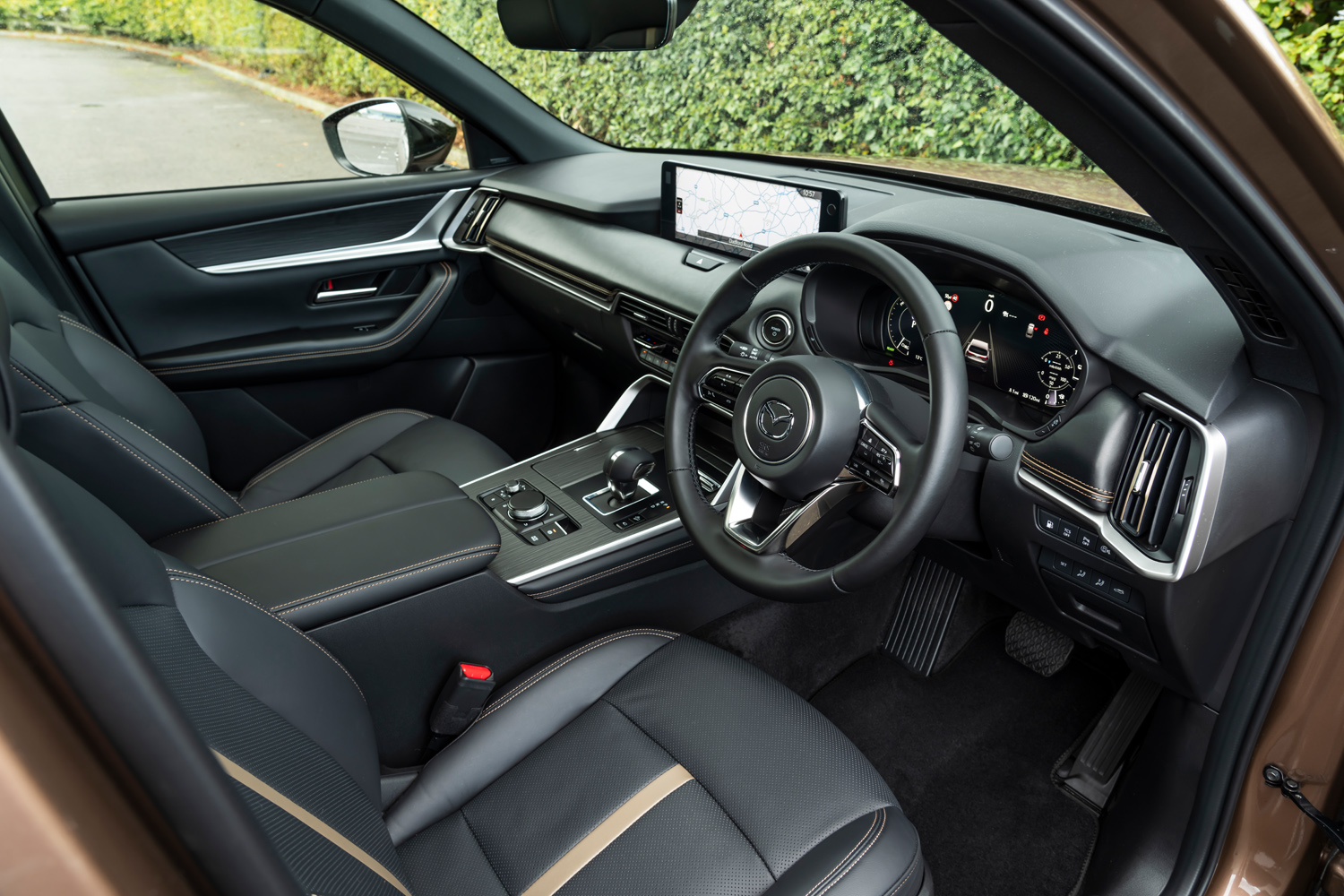
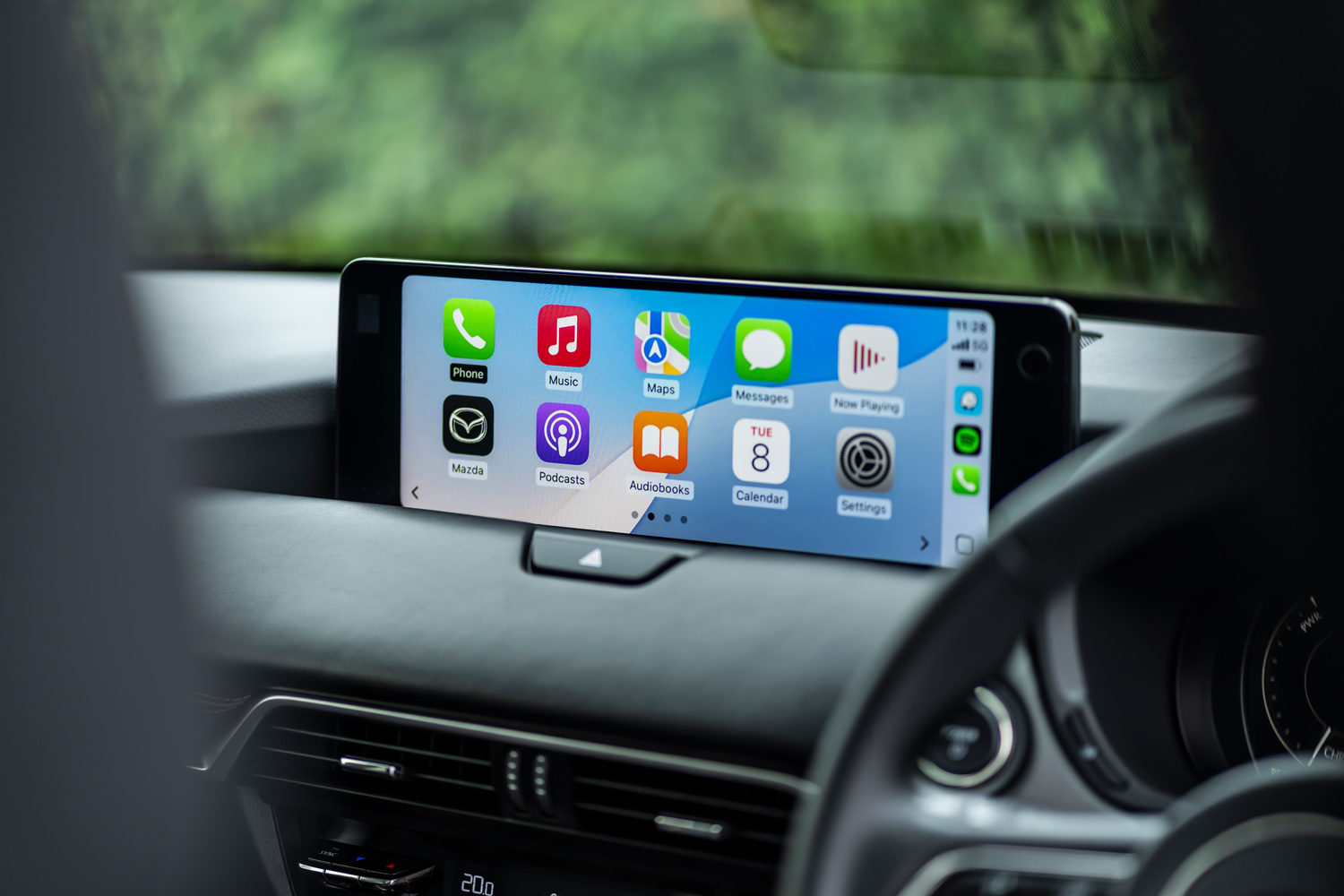
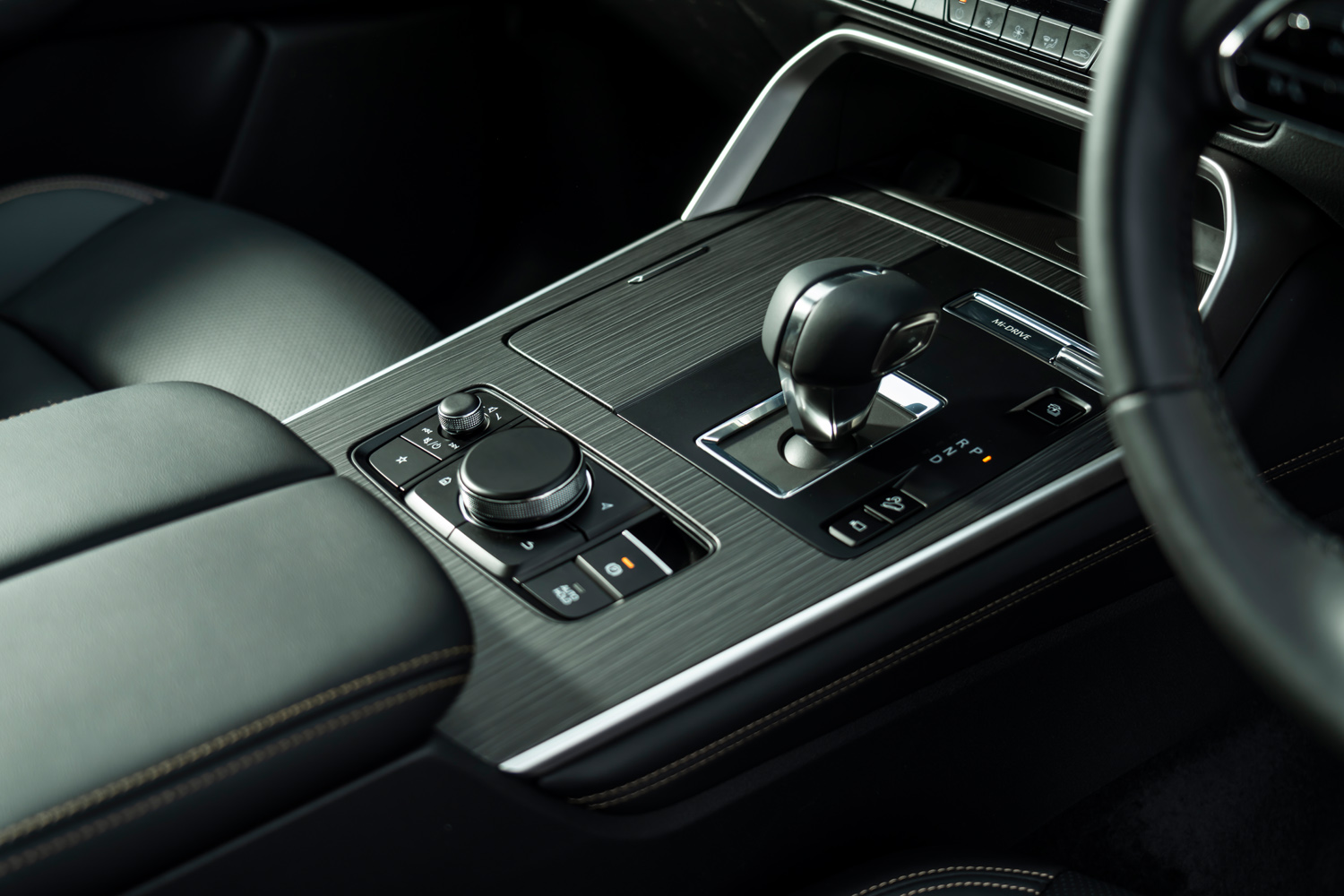
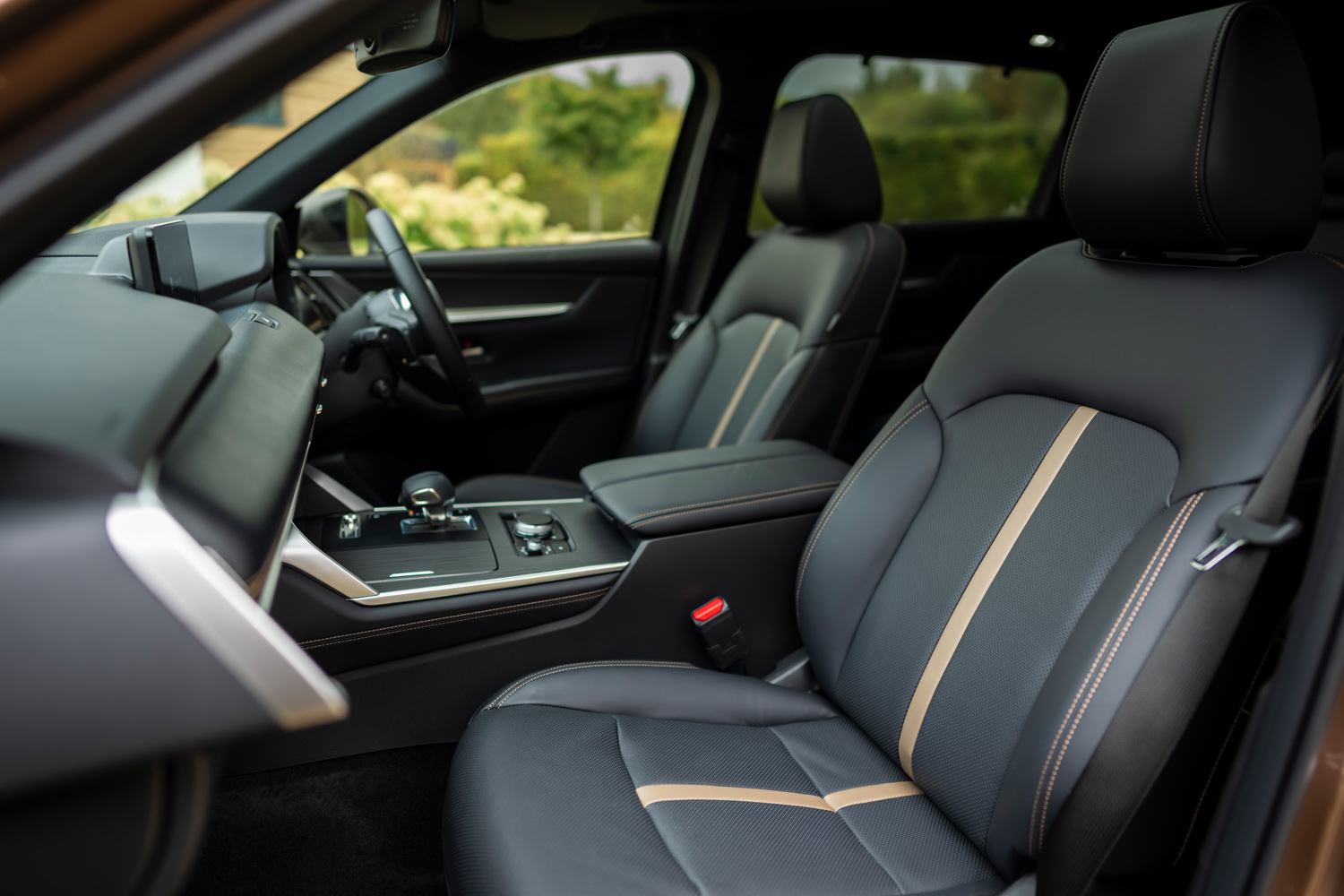
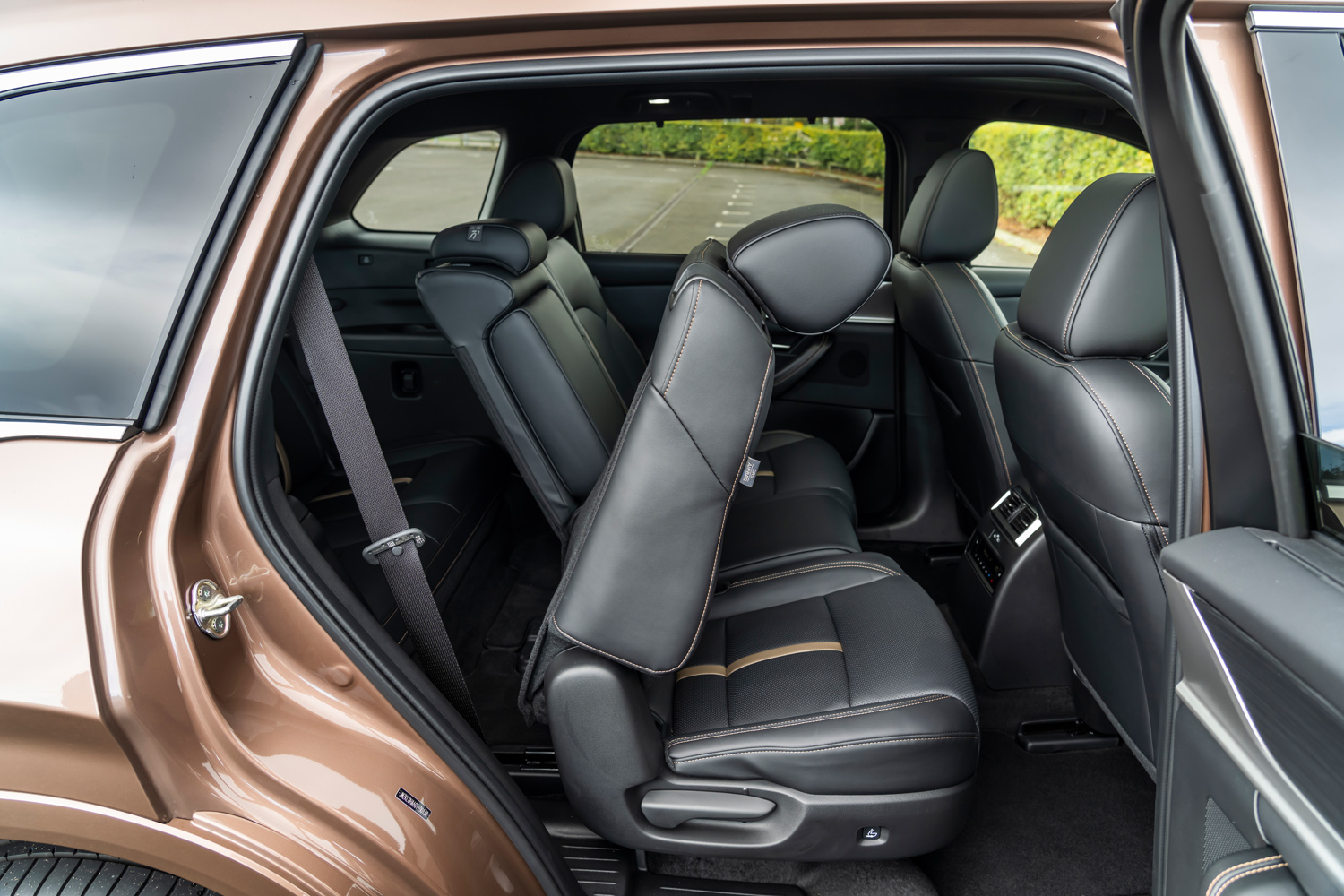
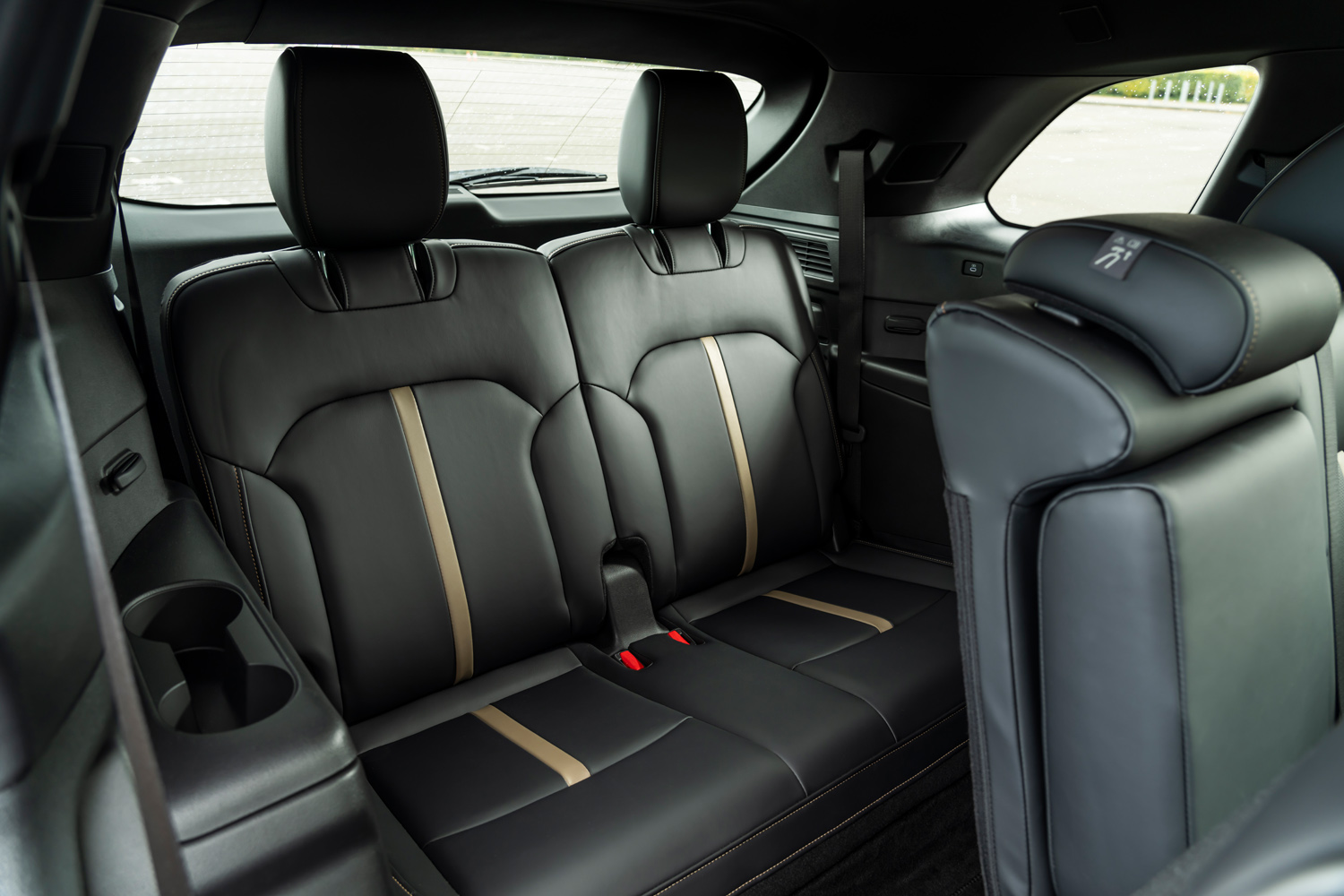
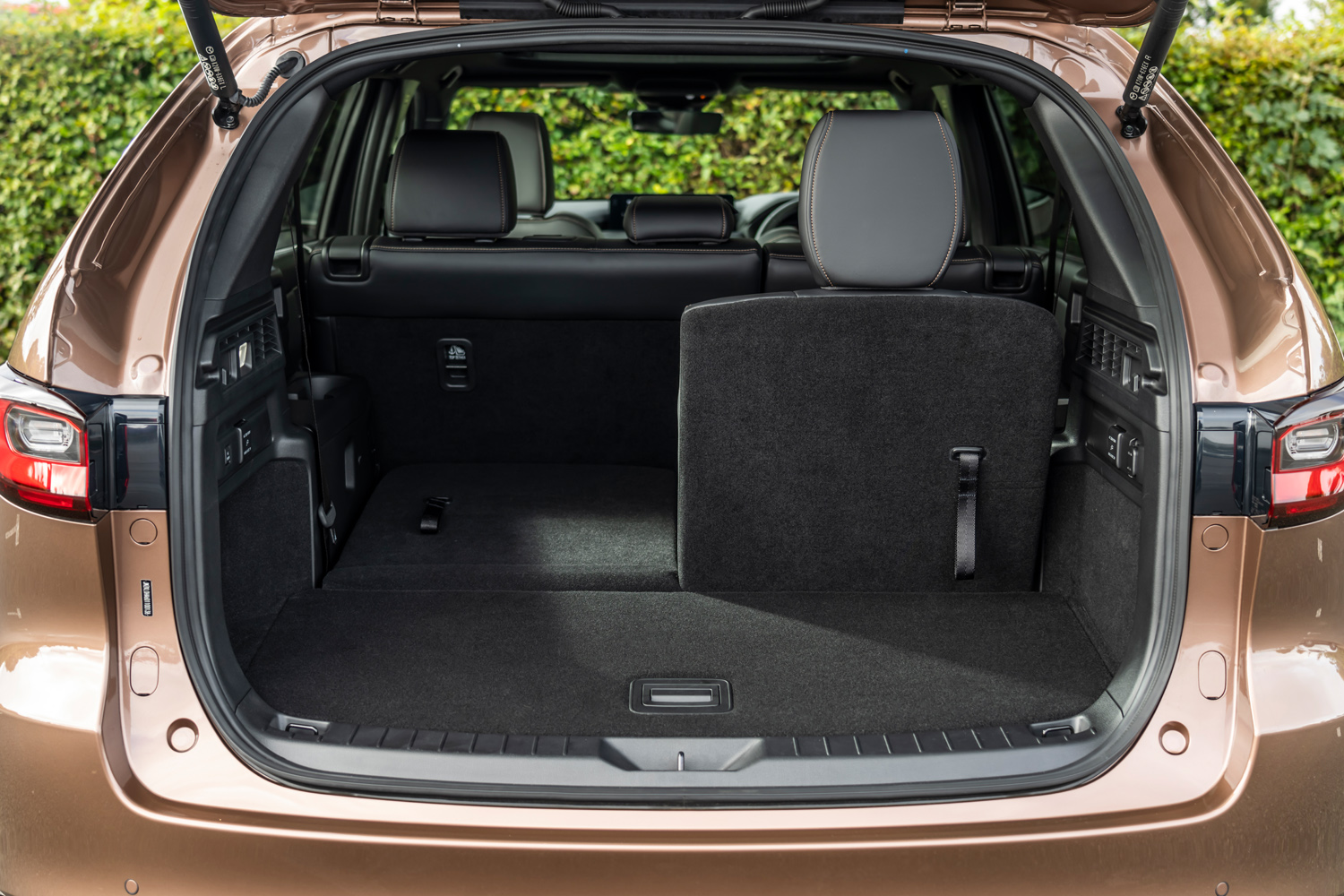
The CX-80 strikes a sensible compromise between buttons and screen activity, with one landscape-orientated, 12.3in infotainment area in the middle of the dash. Down below are lots of actual buttons, for climate controls and the like, which is appreciated. I quite liked the mix between traditional and modern. Mazda have got it about right in that respect with a delicious driver display supplemented by a cool head-up offering in my car.
Mazda likes to do its own thing when it comes to in-car tech and, a bit like Lexus, the experience looks premium on paper and expectation levels are high. It’s not always such a great user experience though. I felt this about the voice control system, which seemed unable to help me get to London Heathrow airport after an unexpected detour due to a road closure. I gave up in the end after trying just ‘London’ with no luck. Disappointing.
Once I’d got my head around the way the system works it wasn’t bad; the fonts and overall layout are okay. A big round dial on the centre console let me scroll through and select lots of options in transit and, for the most part, this worked quite well. However, much as I like my Japanese cars, I do think infotainment systems on a lot of them do leave a little bit to be desired. I’m adding the Mazda CX-80 to that list.
The adaptive LED headlights on my trim level were impressive, mind, and Mazda has added in a duo of three-pin plug sockets to the CX-80 so laptops and the like can be plugged in for convenience. Elsewhere, my car had wireless Android Auto and Apple CarPlay, lots of Google interactivity and integration with Amazon Alexa if that’s your bag. A quick nod of approval to the Bose audio system too, which worked a treat in the cathedral-like confines.
Mazda CX-80 verdict
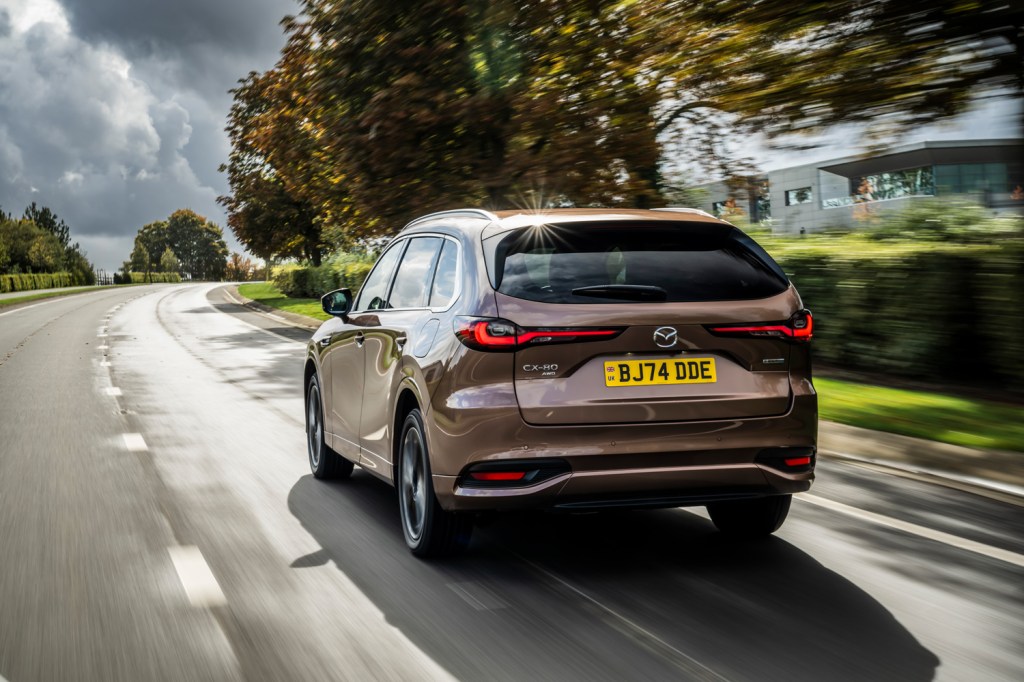
I drove a top-of-the-range CX-80, which meant that its price tag was in the region of £55,000. However, lower levels variants are in the £40k ballpark, which is a little more bearable.
The upside of spending the extra cash is the premium feel of the interior. That might seem like money well spent but if, as I suspect, the Mazda CX-80 will likely end up ferrying kids around, a cheaper trim level might be a more practical option. Either way, this car feels a lot less bulky to drive than it actually is, but if you’re intimidated by the tight parking scenarios found during school run time, it might just be a little too bulky for comfort.
Stuff Says…
If space is a top priority the Mazda CX-80 is one to watch. Comfort levels are glorious, but there are rivals who pip it to the post in the six- and seven-seater stakes
Pros
Oodles of room front and back
Posh equipment levels and very practical too
Relative rarity will probably work in its favour
Cons
PHEV isn’t as refined as the diesel
Battery-only range is good but not great
A hefty thing to manage in small spaces
Mazda CX-80 technical specifications
| Powertrain | 2.5-litre petrol motor, plus permanent magnet synchronous motor |
| Battery | 17.8kWh |
| Power | 323bhp |
| Torque | 406lb-ft |
| 0-62mph | 8.4sec |
| Top speed | 122mph |
| Range | 38 miles (EV only) |
| Charge rate | 7.2kW |
| Cargo volume | 566 litres |


